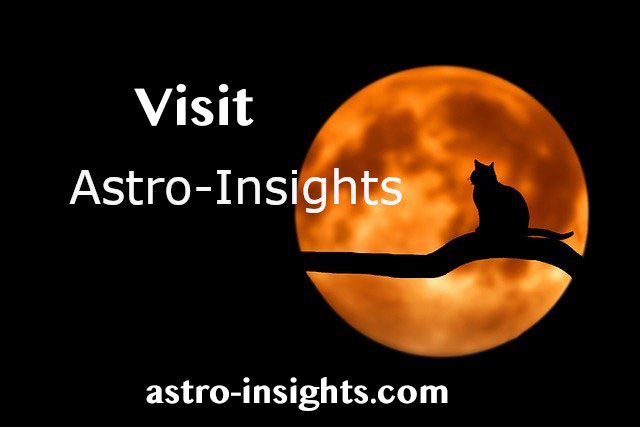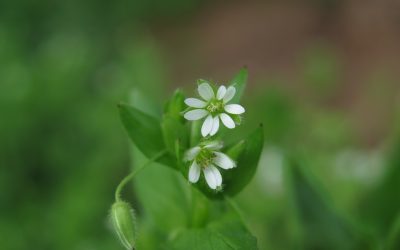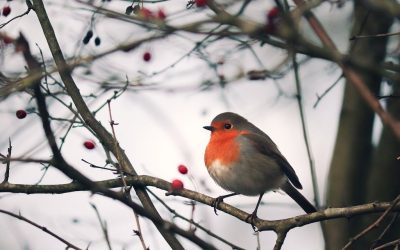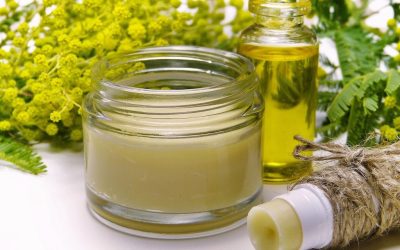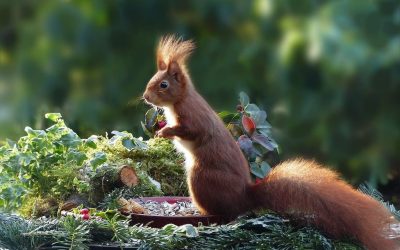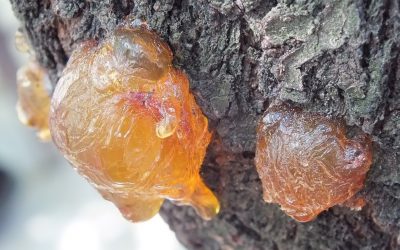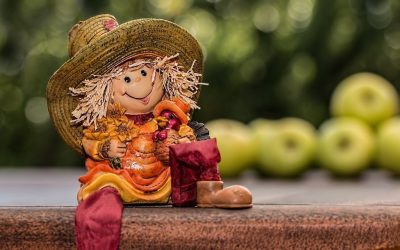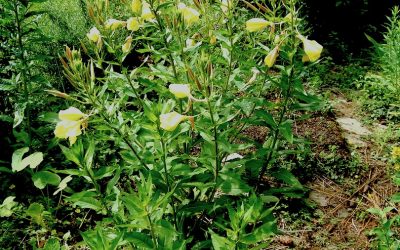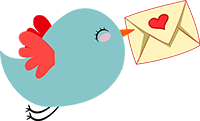Nature Notes
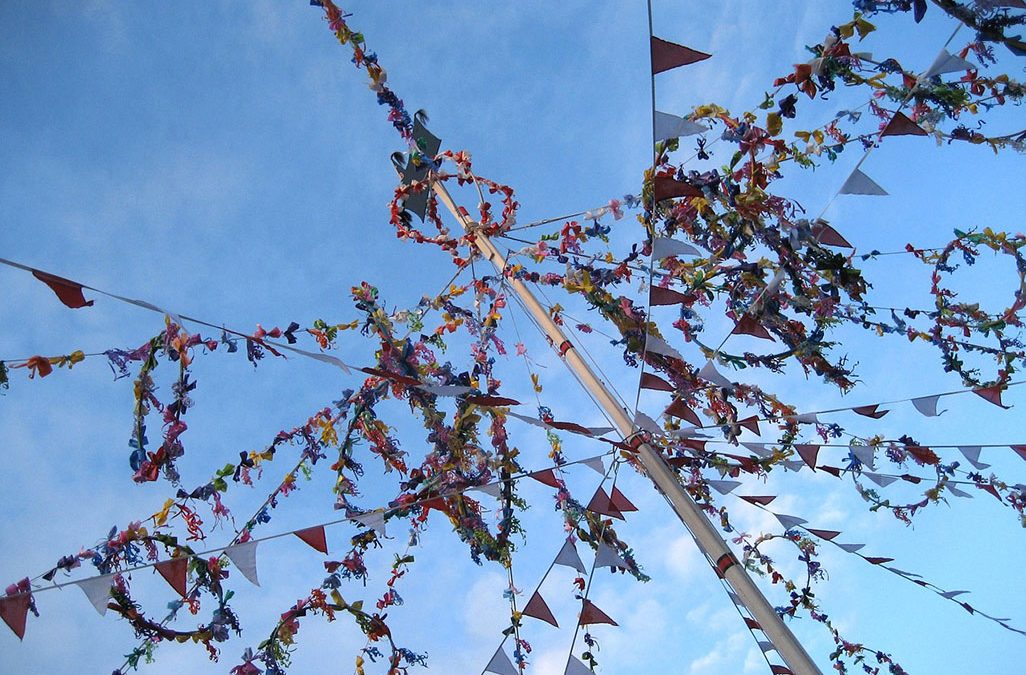
Happy Beltane!
Happy Beltane!
On May 1, we celebrate Beltane, the festival of spring.
Mother Earth is donning her lushest gown of flowers and blossoms, and birds are singing from the trees. The heart rejoices, and the spirit soars!
Beltane is the season of blossoming fertility, joy, abundance and creativity. We celebrate the sheer miracle of life in all its beauty.
The God and the Goddess embody the undying force of life, and they are in love. Nature mirrors their bliss. Their dance turns the land green and lush with every step. Every fragrant flower is a kiss and a blessing, a sign of their adoration.
We are invited to join them and share in their passion. Let’s celebrate life! Beauty, love, and merry-making are our rituals, and the energy is tangible.
Gardeners witness and partake in this magic as they nurture young seedlings. But even if you don’t have a garden, you can still participate – just tend to your inner garden! Pour energy into your budding projects, and you will experience a similar phenomenon – the magic of creativity.
The secret ingredient of manifestation is the love and nurture with which we tend to our seed ideas.
Take the time to reflect on Mother Nature’s generosity, and practice gratitude and mindfulness to attune to every nuance of this blessed season.
Photo credit: Image by Ronny Overhate from Pixabay
Are you interested in Astrology?
We are living in turbulent times. If you have ever wondered what is going on with the planets these days, check out Astro-Insights.com for current astrology updates and planetary insights. or contact info@astro-insights.com for a personal astrological counseling session.
Current issue
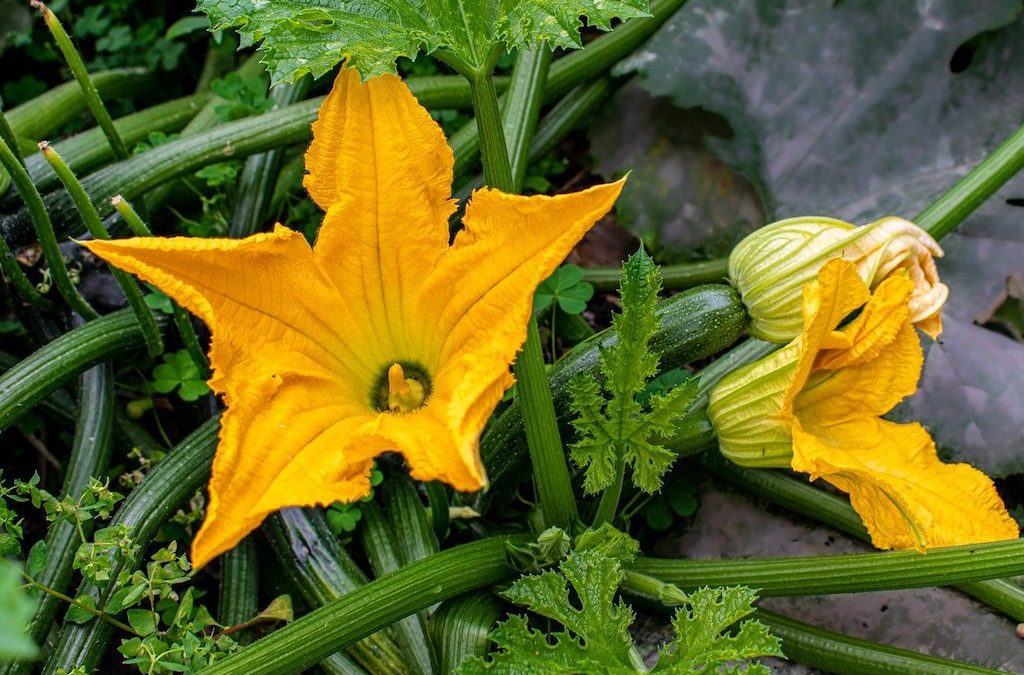
Gardening Jobs in July
What gardening jobs are there to do in July?
This is the time of the year that every gardener is waiting for! The garden is in its prime. Everything is growing, flowering and fruiting. It is a sheer joy to be out there, enjoying nature’s bounty.
July is a time of plenty. Early crops are beginning to ripen, and you can enjoy the fruits of your labour. But it is also a time to think ahead to the dark season and the crops you’d like to harvest then – they need to be sown and started now. There are plenty of gardening jobs to be done in July!
HARVEST:
Continue to harvest lettuce, radishes, beets, peas and courgettes. Long-season or perpetual raspberries and strawberries are still fruiting and can still be harvested.
Onions and garlic begin to topple over, a sure sign they are getting ready, but wait until the onion tops turn yellow before lifting them. Then, you can leave them on the ground or spread them in a well-aerated box or basket to dry them thoroughly.
Early runner beans and potatoes are also getting ready.
Harvesting herbs
Now is the prime time to harvest herbs. For culinary uses, it is best to pick herbs before they flower. Choose a dry, sunny day. Spread them out in a well-aerated place. Hanging them up in bunches actually encourages mould. Herbs are often rich in essential oils that quickly ‘fly off‘ in hot temperatures. Thus, it is best to dry them in the shade.
SOWING (for late season/winter harvest):
Now is the time to sow winter cabbages, kohlrabi and kale, mustards, and pak choi. If you have carrot seeds of late varieties, sow them now.
If you have a shady spot, you can continue to sow lettuce, chard, endive, chicory, chervil, radishes, coriander, rocket, and spinach. Keep them well-watered and not in full sun to prevent them from bolting too quickly.
TOMATO CARE
Tomatoes need a lot of water. Keep the moisture in the soil by spreading a thick layer of mulch around the base of the plants. If they don’t get enough water, the skins turn harder and will crack as the fruit develops. The best time to water is in the evening or early morning. Avoid splashing water directly on the leaves.
You can boost your plants by putting some compost around the base. Or, use liquid manure, such as nettle manure, or some other organic tomato feed available from the garden centre.
Watch out for blight and end rot. Remove yellowing leaves. Pinch out any shoots that develop in the leaf axils.
WATERING
Water your plants as needed, neither too much nor too little. Container plants are particularly vulnerable to drying out and need the most attention. Mulch well to keep the moisture in the soil.
Check out SeedsNow for your organic gardening supplies!
Happy Gardening!
Image by Cornell Frühauf from Pixabay
#Ads
Disclosure: Commissioned earned from your purchases at suppliers linked to on this page help to support this website and keep it afloat without random intrusive advertising.
Plant Profile:
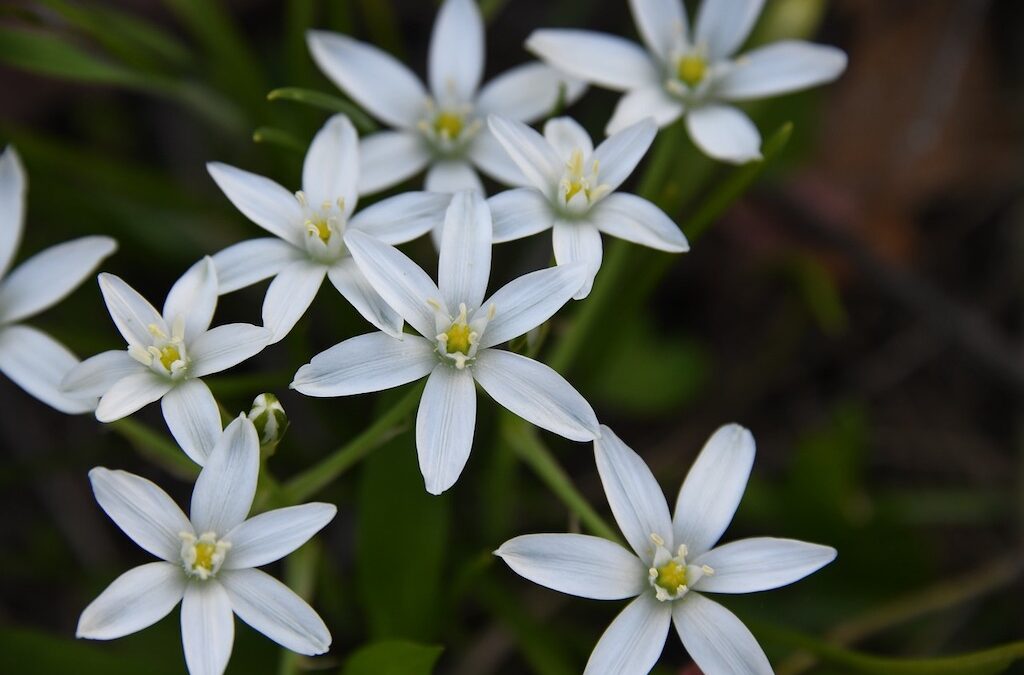
Star of Bethlehem
Plant Profile: Star of Bethlehem (Ornithogalum umbellatum)
Family: Liliacae /allium family
I recently took up nature journaling, and when I sat in the garden looking for a suitable motif, I suddenly noticed a Star of Bethlehem growing at my feet. I had seen them in the vineyards many times, but hadn’t noticed them moving in with me.
Apart from giving them a friendly nod, I had never paid much attention to them. As far as I knew, they were not used for food or medicine; but hang on – didn’t Dr Bach revere this little flower and give it a prime spot as part of his Rescue Remedy formula?
I decided to take a closer look and dropped to my knees to study it in detail. I was immediately smitten by the Star’s sublime beauty and unusual features.
What is the Star of Bethlehem?
Star of Bethlehem is a small perennial bulbous plant of the Lily family (Asparagaceae). Its leaves die back even as it begins to flower. After flowering, its energy retreats into the underground bulb. During the ‘dormant’ period, it produces little bulbils that send up their own narrow leaves early in the following spring. The Star of Bethlehem is thermoperiodic, meaning that it needs to go through a period of low temperatures before it begins to flower.
The pretty, star-like flowers appear between April and June. The white petals have a green stripe on the underside that is only visible when the flower is closed. It looks as if the petal has fused with the sepal. But in fact, botanical descriptions of the plant say that the flower is composed of three identical sepals and petals, displayed in a single whorl. It is impossible to tell the difference, so botanists call them tepals. In the centre of the flower is a little crown of what looks like six white petals tipped by the pollen-bearing anthers. They enclose what looks like a little six-pointed star, from which the pistil protrudes.
Where does Star of Bethlehem grow?
You can find Star of Bethlehem growing in many places throughout Europe and North Africa. It arrived in the United States as a garden plant, which has naturalized to such an extent that the USDA now considers it a pesky weed.
Where did the name ‘Star of Bethlehem’ come from?
The origin of the name is attributed to various stories. The most obvious explanation is its widespread distribution in the Middle East and the Mediterranean Basin. Pilgrims on their way to Jerusalem carried the dried bulbs as food. (But fresh bulbs are reported as poisonous to cattle.) Another myth claims that the flower sprung from fragments of the Star of Bethlehem.
Is Star of Bethlehem known by any other names?
Indeed, it is, but none as charming. Star of Bethlehem is also known as Sleepy Dick, Nap-at-Noon, and even ‘Dove Dung’.
Nap-at-Noon alludes to the flower’s habit of ‘going to sleep’ in the afternoon and on cloudy days. The name ‘Dove Dung’ seems a bit insulting, apparently implying that the white ‘splash’ of the Star resembles bird doo-doo. It doesn’t, and in fact, it is not a reference to the supposed likeness. Instead, the name is a literal translation of the Latin name Ornithogalum, which means ‘bird’s milk’, a common euphemism for avian excrement. The species name ‘umbellatum’ refers to the umbel-like flower.
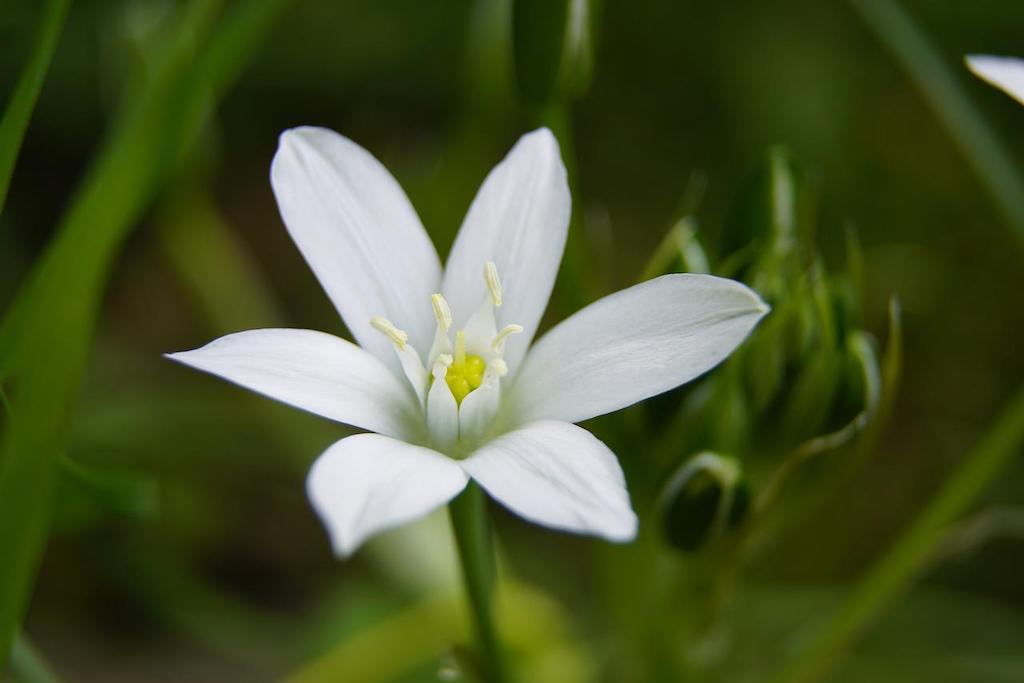
History
Gerard describes it as a type of wild onion and quotes Dioscurides, who mentioned that the bulbs are edible. Both the bulbs and the green parts are sold at markets in Turkey (Central, Bulancak) (1). Yet, they are also many sources that claim it is poisonous. So, what is the scoop?
Is Star of Bethlehem poisonous?
Biochemical research confirms that Star of Bethlehem contains cardioactive glycosides that are potentially toxic. But further investigation showed, that they do not survive being subjected to digestive juices, which would explain the controversy. An early study published by Arthur Vogelsang in 1961 notes that the effect of Star of Bethlehem is quite different depending on whether it is taken orally or injected. To test his hypothesis and confirm that the coating prevents the breakdown of the cardio-active compounds in the stomach. He compared Star of Bethlehem with Digitoxin and observed that its extract slowed the heart rate to a lesser degree than digitoxin while increasing the strength of the cardiac contraction and the excretion of body fluid. Star of Bethlehem also caused less nausea. Overall, Star of Bethlehem is a gentle yet highly effective heart drug that can be given to reduce blood pressure, strengthen the pulse and increase the discharge of excess fluid. It is particularly helpful for patients that do not tolerate digitoxin well.
Note of Caution:
The specific growing conditions, such as exposure to sunlight, water and soil type, change Star of Bethlehem’s chemical composition.
Is Star of Bethlehem used homeopathically?
In Homeopathy, the Star of Bethlehem is known by its Latin name, Ornithogalum umbellatum. It is used to treat persistent gastrointestinal problems, such as upper abdominal pain in the epigastric (central abdominal) region, pressure, malignant tumours of the digestive tract accompanied by depression, and feeling drained and exhausted. It is also indicated for patients suffering from a state of nervous exhaustion with high sensitivity to all types of stimuli.
What are the indications for Star of Bethlehem Bach Flower Remedy?
For Dr Bach, Star of Bethlehem was one of the most treasured flower remedies. He used it as a go-to Trauma remedy to buffer the effects of shock, such as unexpected bad news, the sudden loss of a loved one, an accident or other traumatic event. It can also help when facing the pain of past traumata (PTSD). It is one of the essential components of Rescue Remedy.
More articles:
Ever heard of Lion’s Mane Mushrooms?
I never heard of Lion’s Mane mushroom until I found one in the woods. I am so glad it came into my life – and changed it for good!
How to Plan a Garden – the basics
Growing a garden starts with knowing your environment and creating a map that fits the territory. There are a few basic perimeters.
Foraging Chickweed
Chickweed is a little sprawling herb with heart-shaped leaves and star-shaped flowers that belongs to the Pink family. Gardeners hate it.
Frankincense (Boswellia sp.)
Frankincense is well-known as that stuff that is burnt in church. But what exactly is it, and where does it come from?
Gardening Jobs in December
What gardening jobs could there possibly be in December? More than you think! Harvesting, pruning, even sowing! And of course, planning!
Tree Profile: Yew (taxus baccata)
Few western European trees are as enigmatic as the Yew. Dark, brooding and sometimes eery, each Yew tree very much has its own personality.
How to Make Natural Body-Care Products?
A short introduction to how to make natural homemade cosmetics. Find out how easy it is to make body butters and bath salts at home.
Gardening Jobs in November
The season is drawing to a close, but there are still plenty of things to do in the garden. Planting, sowing, harvesting and caring for the wildlife.
Gums, Resins, Latex
Gums, resins and latex are the sticky stuff that some plants excrete when the outer ‘skin’ or bark has been injured.
Vegetable Oils-Liquid Gold
This article is about common and uncommon vegetable oils that are derived from seeds, nuts and fruit pulp including their fatty acid profile.
Gardening Jobs in October
The summer is over, and the garden is beginning to wind down. But there are still quite a lot of gardening jobs left to do in October.
Evening Primrose Oil
Evening Primrose Oil is one of the best sources of Gamma Linoleic Acid (GLA) with valuable therapeutic and medicinal properties.


